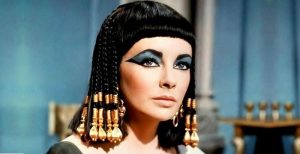Peace Watch » Editor's Take, Kashmir-Talk » Brides and Bridegrooms Then And Now
Brides and Bridegrooms Then And Now
Bridegrooms And Barber’s Bowl
ZGM
In our sprawling city, with beauty salons galore, and brides queuing outsides these for having long sittings with the beauticians, the stories of the past, not that past by their mothers and grandmothers when these parlors were not there, and brides still looked prettier than spring flowers sound to them as good as fairy tales.
fairy tales.
In their pursuit of looking prettier than the Helen of Troy that ‘had launched a thousand ships’ many brides months before the day of marriage start searching for beautician as good as legendary Martha Matilda Harper. Her pictures; of her own floor-length hair, after more than a century, adorn the walls of many a parlors. Some brides dreaming of looking like Cleopatra, that “beggared all description” want their hairstyle, kohl in eyes and eyelashes done as royal as that of the Egyptian beauty . Some brides born of “richer parents” for looking as ‘heavy blonde,’ fair complexioned, hazel eyed changing colors as Italian beauty of yore Lucre Zia Borgia, enter into long contracts with beautician and pay huge money. For shaping their body like the famed Italian beauty, they undergone long sessions of waxing and drills of roller massaging before the day of departure to bridegroom’s house.
These scenes during marriage season often makes one nostalgic about the times when there were no beauticians, no salons in the city and the brides were not worried about their artificial eyelashes falling down with tears at the time of departing parents’ house. And it were the elderly women that took all care for making the brides look prettier through indigenous means and methods. Cottage butter was rubbed deep to the roots of the hair and the locks. Ghee or mustard oil was applied to the body, followed by suntan. If my childhood memories support me, the process continued for a few days. Thereafter, would be maassmuuchrun; a ceremony connected with spreading of hair, it was accompanied by traditional folk songs praising the beauty of the bride. In our boyhood, the custom of inviting women expert in making traditional braids- interlacing strands of hair into small plaits and overlapping them into cornrow tresses had died down and it only survived in the rural areas, yet the service of some living braiders were sought for weaving locks, like ‘dreadlocks’ after the ritualistic bath of the bride. Despite, the tradition of voudparan having vanished from our social scene, braiding in its new avatars ‘mermaid braids’ and ‘French braids’ has become a craze with some brides. The hair spreading ceremony with all its gaiety was followed by ‘mallamanz,’ in today’s parlance, it can be called the day for applying of ‘foundation henna’ followed by manzrat, night for putting on henna to hands and feet of the bride. The job was done by some expert woman in the family or siblings or friends of the bride and not by men that too from outside the state.
It is not only brides, who put hard labor for looking prettier than they are on the ‘big day,’ but even the bridegrooms visit the salons of the best of the barbers in the city with high credentials for adding to their charms. Like brides, they also undergo arduous hours for doing facials, threading, hair spa, steaming, de-tanning, manicure, pedicure, and hairdressing.
These bridegrooms reminds me of an elderly coiffeur of our Mohalla, in wee morning hours much before we left for school he opened the wooden shutters of his shop and squatted on a mat in a corner of his shop. The only prized property in his shop was small walnut wooden box containing an assortment of his tools. On a marriage in the Mohalla, he also would come into spotlight by becoming part of the celebrations on the occasions of hairdressing of the bridegroom. While dressing hair and shaving the bridegroom, he would remain surrounded by rows of women singing folk songs praising his skills and making the groom look prince of Shiraz. The women even men would drop tip money for the barber in a wooden or brass shaving bowl that he kept in front of him. After doing hair of the groom, the barber would do haircuts of all the children in the family and shave of many a relatives. Besides good money as tips, he was handsomely paid by the family head. He would also do “hamam” of the bridegroom. Those days I did not understand what it really meant- it was much later I learned about it.
Filed under: Editor's Take, Kashmir-Talk








